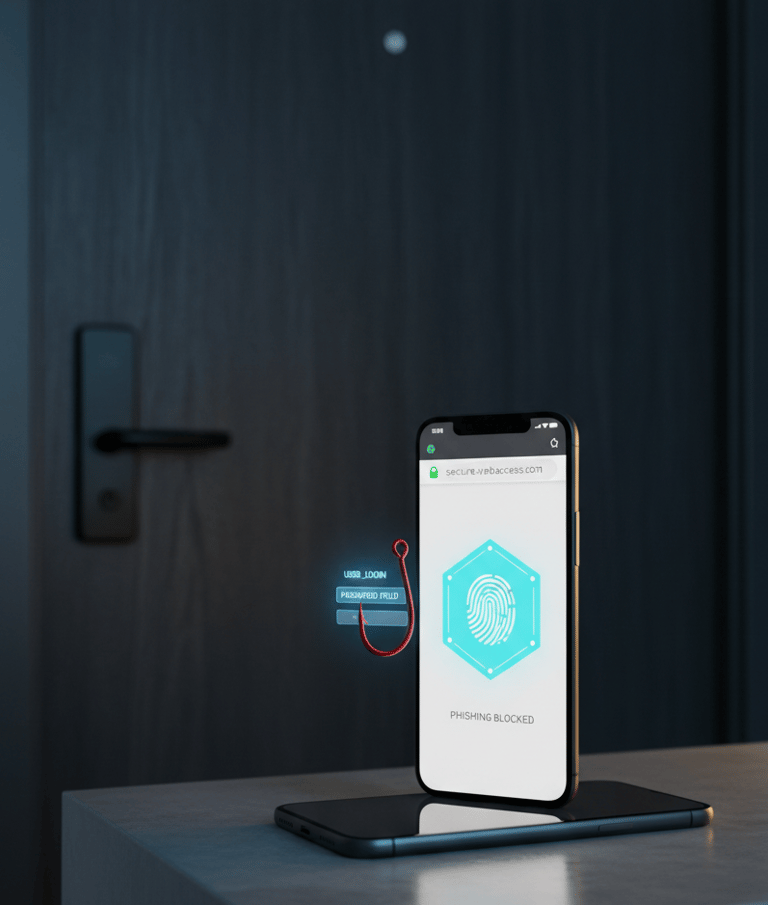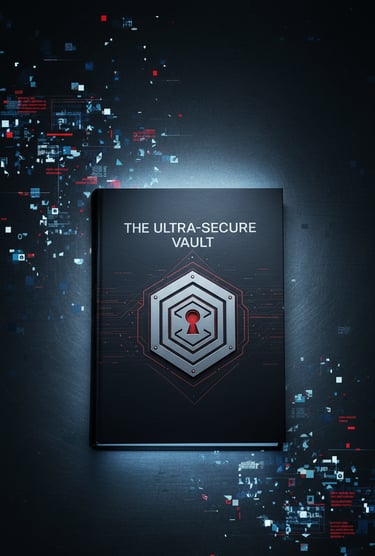CIN, The 183M Credential Dump, Fact vs Fiction and Why Passkeys Win
No, Gmail was not hacked. The 183M Credential Dump came from infostealers and password reuse. Learn the Tier 1 to Tier 3 response, force sign outs, clean endpoints, and upgrade to phishing resistant MFA with passkeys and FIDO2.
Chain Editorial Team
10/30/20256 min read
💭 Imagine This…
You leave your apartment door “kind of locked,” because, well, you plan to be back soon. A thief does not pick the high security building entrance, they tailgate behind a neighbor, then they fish your spare key from beneath the doormat.
Now they do not need to pick any lock, they just stroll in using your own key, and for days.
That, in internet terms, is infostealer malware and session token theft. The headlines scream that the building was breached, the truth, your personal door was left vulnerable, and someone found your spare key. This credential dump is the doormat moment, and passkeys are the door that only opens when you, physically there, turn it.
⚡ FlashChain: Your 15s Brief
No, Gmail was not hacked, this was a mega compilation of stolen logins from infected devices and old breaches.
183 million unique accounts surfaced, about 16.4 million appear new, so risk is immediate for many.
Infostealer malware grabs passwords and session tokens from your browser, which can bypass weak MFA.
Tier 1 response, check exposure, rotate passwords everywhere, force sign out on all devices, scan and patch the endpoint.
Strategic fix, adopt phishing resistant authentication, Passkeys or FIDO2 hardware keys.


The 183 Million Credential Dump, Fact, Fiction, and the Shift to Phishing-Resistant Auth
💡 Let’s Dive In
What Really Happened, and What Did Not
Sensational media framed a catastrophic Gmail breach. Google publicly disputed that narrative, clarifying there was no compromise of Gmail’s infrastructure. The panic stemmed from a giant compilation of credentials gathered over time, not a single platform hack.
The dataset itself was indexed into Have I Been Pwned after being shared by Synthient. It contains 183 million unique email addresses, mapped to sites and passwords, and includes credentials sourced from stealer logs, phishing, and credential stuffing lists. Roughly 16.4 million emails in the pile were previously unseen, which is why the risk is not theoretical.
If you saw headlines insisting “millions of Gmail accounts hacked,” remember, compilation does not equal a Google breach. It means millions of people had secrets stolen off their own devices, then bundled and resold at scale.
Your digital assets are under constant threat. Secure them with the ultimate offline solution.
How It Works in the Real World
Infostealers are the endpoint predator. They sneak in through fake updates, shady installers, malvertising, and convincing phishing, then exfiltrate browser-stored passwords and live session cookies. The loot ships as “logs,” traded on Telegram and dark markets, and pumped into automated account takeover tools. This is why crooks win on volume; they are not hand-picking targets, they are industrializing abuse with your reused passwords.
Worse, session token theft can defeat old-school MFA. If an attacker steals a valid cookie from your infected machine, they can ride your already authenticated session without ever entering a code. Law enforcement and incident responders have warned about this trend, and it is exactly why you must force sign out on all devices when you rotate credentials.
Benefits, Risks, and Why It Matters to Crypto Users
Crypto is one layer deeper than email, but email is often your recovery layer for exchanges and wallets. If your mailbox falls, the domino path to your exchange login, then to withdrawal approvals, gets much shorter. This dump is your wake-up call, specifically because about 16.4 million entries may be fresh, meaning the window for automated credential stuffing and takeover is wide open right now.
Still using SMS codes, or a basic authenticator on accounts that support passkeys, you are stopping yesterday’s attack while crooks use today’s, token replay and real-time phishing kits. The industry consensus is shifting fast; phishing-resistant methods, Passkeys, and FIDO2 keys are the gold standard because they bind to the real site and cannot be replayed on a fake one.
🧾 Final Take
The 183 million credential dump is not a Google failure, it is an endpoint reality check. The problem lives on our devices, in our habits, and in the brittle architecture of passwords and weak MFA. The fix is not more panic, it is better design. Move critical accounts to passkeys or hardware keys, clean the machines that touch your money, and practice a default deny mindset for downloads and links. That is how you stay solvent in a world where attackers scale like startups. The register
If you want to go deeper, check our guides on DeFi safety tips and what is a cold wallet, and our walkthrough to set up passkeys on your primary email and exchanges, internal links, add after publish.
🔔 Stay Plugged Into the Chain
Don’t just read the future — ride it.
Join crypto-curious minds who are already unlocking insights with us.
📬 Subscribe to our newsletter for weekly alpha, real-world strategies.
📱 Follow us on Instagram and X for bite-sized insights, memes, and market signals that actually make sense.
👉 Your journey through the chain starts here.
The Passkey Moment, Why This Changes the Game
Passwords are shared secrets, anything shared can be phished, replayed, or stolen off disk. Passkeys remove the shared secret. Your device holds a private key, the site holds a public key, and the cryptographic handshake only works on the real domain, so the usual tricks, fake login pages, reverse proxies, prompt bombing, run into a brick wall. Even better, passkeys effectively bundle what used to be multi factor into one step, something you have, your device, and something you are, your biometric. This is why major players push passkeys as the safer, simpler future. WIRED
For teams, the benefits stack, lower help desk load, fewer breach drills, fewer resets, lower phishing impact, and cleaner compliance stories. The FIDO Alliance community keeps hammering the same point, origin checks and relying party integrity are the core of phishing resistance. If the origin is wrong, the signature fails, period. FIDO Alliance
Tips and Real World Applications
Tier 1, Do This Now
Check exposure using a reputable breach notification service like Have I Been Pwned. Do not feed passwords anywhere, use its email check and, if needed, the k-anonymity password feature. Have I Been Pwned
Rotate the password everywhere it was reused, not just on one site. Compilations weaponize reuse. A harmless forum breach can become a bank or exchange breach if your secrets match.
Force sign out of all sessions on the affected accounts to nuke stolen cookies. Change alone is not a cure if a hijacker is already inside your active session.
Scan and patch the endpoint that leaked your data. Clean the machine, update OS and browsers, patch extensions. Otherwise, the stealer just re-steals the new password.
Tier 2, Upgrade Your Auth Architecture
Adopt Passkeys anywhere they are available, Google, Apple, Microsoft, crypto exchanges that support WebAuthn. Passkeys use asymmetric crypto tied to the legit domain, so a phishing site cannot trick them. Users get a one-touch biometric, security teams get fewer lockouts and resets. Win-win.
Use FIDO2 hardware keys for high-value accounts, exchange admin, organization email, recovery emails, and any account that can move money. Hardware keys enforce possession plus origin checks.
Retire weak MFA like SMS and basic push, convenient, but vulnerable to SIM swaps and fatigue prompts. Upgrade to phishing-resistant factors.
Tier 3, Daily Cyber Hygiene for Degens
Password manager or nothing, aim for 15+ characters, unique everywhere. Reused passwords are the attacker’s favorite arbitrage. Have I Been Pwned
Google Password Checkup runs a health scan at https://passwords.google.com/ to spot reused, weak, or exposed passwords, then fix them in one sweep.
Browser diet, fewer extensions, no shady installers, ditch pirate downloads, these are classic infostealer delivery trucks.
Segment devices, keep your DeFi box clean, do not mix wallet ops with random gaming mods or testing tools on the same machine.
Zero trust mindset. When in doubt, sign out, rotate, and re-auth with a passkey.



Subscribe to our newsletter
CIN - ChainInsights Net
Crypto Education & Legacy Platform.
Explore crypto finance, trends, and market strategies.
© 2025 ChainInsights Net. All rights reserved.
⚠️ Disclaimer
Everything you see on ChainInsights.net — including blog posts, tools, links, community content, and socials — is shared for general educational purposes only. We source insights from multiple third-party platforms, but we don’t guarantee the accuracy, completeness, or freshness of the information.
Nothing here is financial, legal, or investment advice. You shouldn’t make decisions based solely on our content. Always do your own deep-dive, triple-check your sources, and consult a qualified financial advisor before putting capital on the line.
Crypto is risky, and markets move fast. Your choices are yours alone — we’re just here to decode the noise, not direct your trades.
❤️ Fuel the Mission
Every world-changing idea starts with someone who believes.
Every movement begins with one spark, but it takes a community to build the fire.
Your support helps us grow, reduce ads, and stay truly free.
Donations: 0x331381fB8AE4894d8Ee8d1f066C4582B2262ccDA








